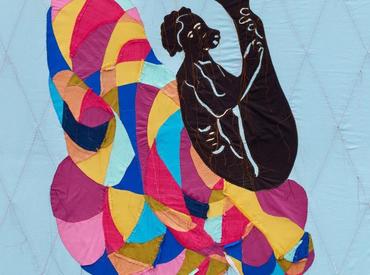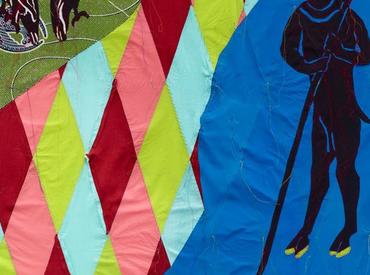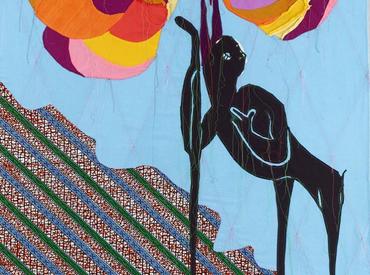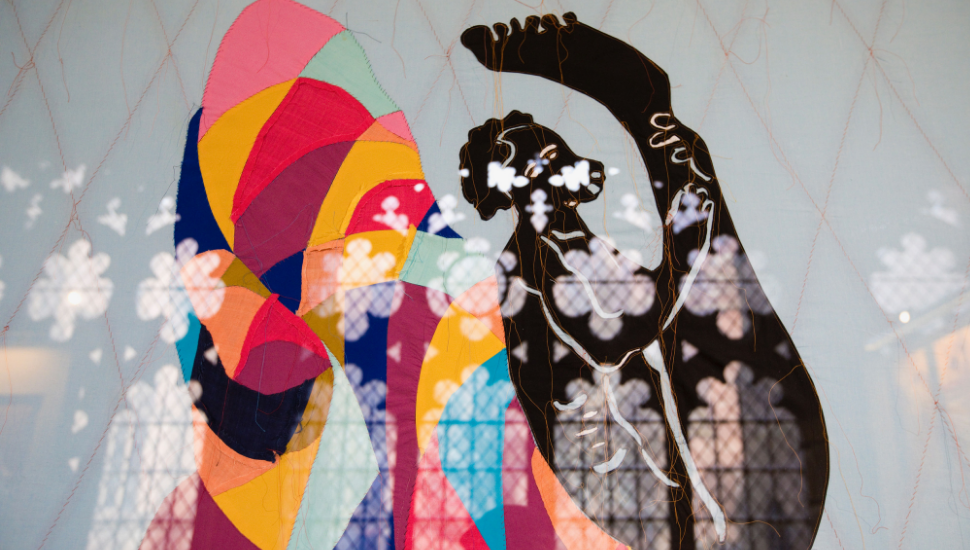
Even Yinka Shonibaré’s loose threads rage against colonialism.
But before being shortlisted for the Turner Prize, before putting Nelson’s Ship in a bottle and on a plinth, before making jokes about the absence of up-skirting priests in his work from a stage in the Hereford Cathedral, the British-Nigerian artist who would best come to define Modern Britain’s uncomfortable relationship with its less-comfortable past glories, he was asked by a Goldsmiths teacher whether his work couldn’t be more authentically African.
“No one ever asks an English artist 'why don't you make pieces about Morris Dancing?'
“So I went to Brixton Market to learn about being an African artist.”

His new collection reclaims races that appear on the fringes of the Mappa Mundi. They are mythical and monstrous and dark in a way that things on the edges of our view often are. But pulled out, blown up and put at the centre of their own work, these same figures are defiantly colourful and joyful and entirely unknowing of how they are being depicted by the quill of a monk a thousand miles away.
The 700-year old map is among the oldest reminders we have that people have always told themselves stories and drawn lines across the world to help better understand it. Paired with this project, it’s a smiling reminder that no one part of that history should ever be framed with the certainty of a single perspective.
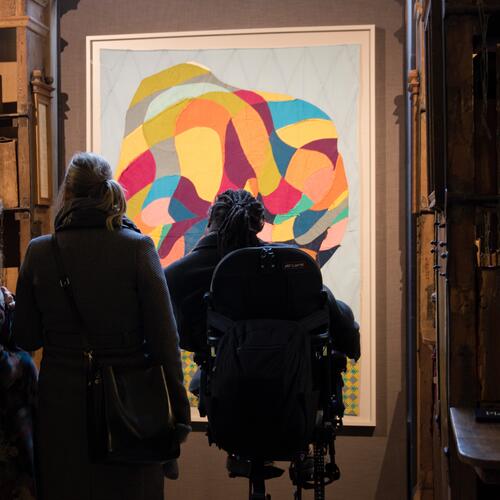
“It’s not about knocking monuments down,” Shonibaré told a young artist in the crowd as he presented the collection in Hereford Cathedral on Thursday night. “It’s about building our own monuments.”
His six quiltwork pieces now hang alongside and opposite the original map. And they will do, in Hereford, until June. Three of the pieces were made by Shonibaré in London. Three were stitched by local community groups working with his team.
There may be more work to come. The artist doesn't sound finished with the men and the monsters of the Middle Ages.
“It’s an ongoing project,” Shonibaré told a 400-strong audience in Hereford Cathedral’s main, January-cold chamber, a 15-foot crown hanging, likely unintentionally, above and just behind him.
“When Meadow [Arts] first called I told them no I was busy. When they called again I told them no I was busy. Then I really looked at it. It’s really fascinating. I’m going to do more projects around it.”
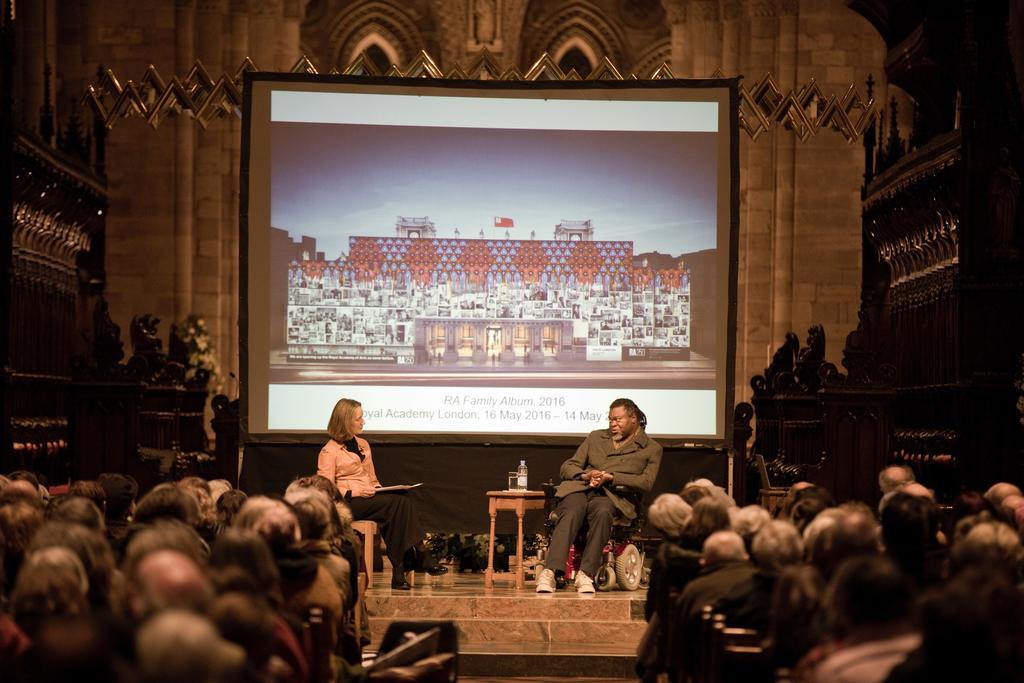
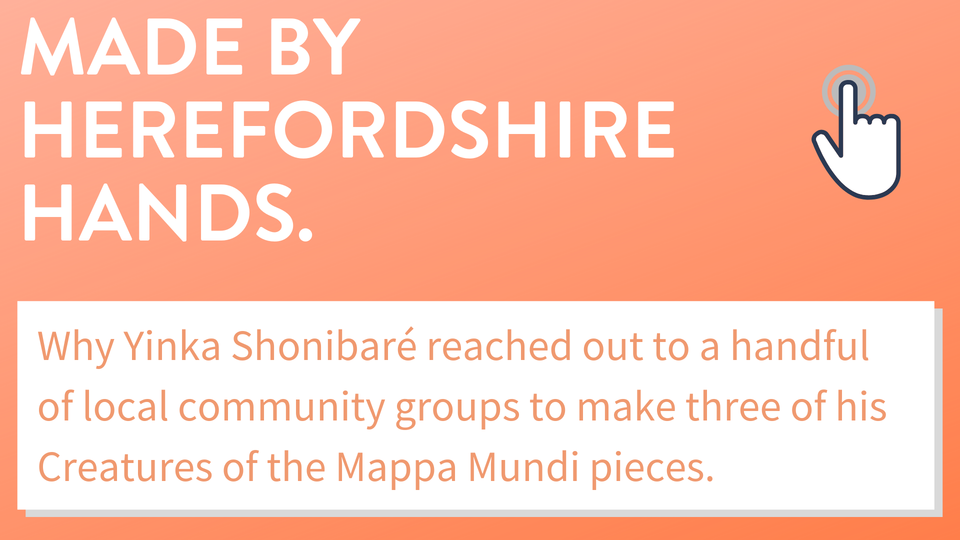
As of last month Shonibaré is officially a Commander of the Most Excellent Order of the British Empire. And nothing about that fact is lost on him.
“I think that historically I have a lot to be angry about,” he said.
“In Africa people were lumped together and called a country and the legacy of that is that there are people who are still trying to make a country out of that. The so-called democratic world we have is still profiting from it.
“Anger is useful. But it does need to be channelled.
“I grew up in Nigeria watching Sesame Street and Upstairs, Downstairs. I want to shout at the establishment. But secretly I want to be a part of it.”
When he talks, and perhaps when he works, you never feel the smile is far Shonibaré’s face. Nor the gravity of his intention. From his films to his ballets and fabrics and libraries and London tower blocks he is clear about one thing: he wants the audience to enjoy it as much as he does.
“I'm not one for dry, conceptual art.
“Politics is a part of my work, but I am an artist. I don't think it should be hard to interpret art. Not. At. All.”
When Marvin Gaye recorded What’s Going On, he tore in to the tenets of American society through honey-smooth vocals and finger-clicks. Shonibaré says he’s doing the same thing. It’s the fun in his fabrics that allows him to sketch the “terrible beauty” of the world.
“A lot of my work is dark, but the dark is not the first thing that you see. I feel as an artist that you craft is essential - what you do with the form is what part you are trying to express.”His Wind Sculptures, installed across the world, are great anti-sculptures Shonibaré says. Towering and modern and delicate, they are also precisely Not A Man On A Horse With A Sword.
For the Creatures project the threads are left loose, hanging down the face of the eight-foot quilts.
“I wanted to show process." he said. "Modern is about process. It's not about trying to hide the process of making it.
"They're derived from African American story quilts. I wanted to celebrate the defiance with colour, but I wanted to take them in a pop direction.
"It's about taking the modernist approach further.”
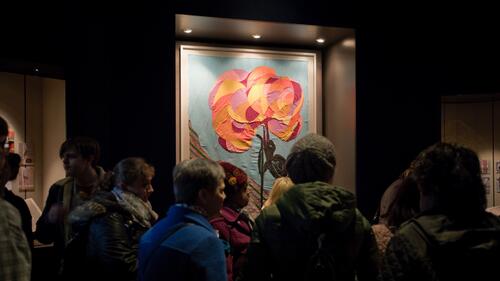
His career has decapitated batiq’d gentry and assassinated coiffured Swedish kings with a balletic grace. For someone whose health makes public appearances more challenging than most, there is little about Shonibarés work and his process that suggests anything but a desire to bring people in and tell them his stories – and to listen to theirs. He was never going to become an artist locked away in his gallery working alone, he says. His ideas would always have outgrown his limits.
And they have. And while the acclaim duly followed, if C.B.E. is a three-letter title that winks back at the quiet voice inside him that wants to be secretly accepted by the Upstairs, Downstairs, by royal appointment Establishment, he’s always going to be the guy hopeful that that way of seeing the world dies out long before his medal rusts.
He’s used South London council estates as a canvas. He’s set up projects for young artists in Lagos. He’s worked with older people and textile artists with learning disabilities on Creatures.
“You get the Establishment you deserve.
“The only point of me being there is to try and change it.”
*************
The Creatures of the Mappa Mundi exhibition - commissioned by Meadow Arts - runs at the Hereford Cathedral until June.
The community groups involved were Rose Tinted Rags (run by the charity Echo), the Creative Aging group base at the Courtyard Centre for the Arts, and a group of students at Hereford College of Arts.
The project was supported by Herefordshire's a Great Place, a cultural development project co-ordinated by Heritage Lottery Fund and Arts Council England, and supported by Historic England.
Images in this article were taken by Stefan handy for Meadow Arts.
